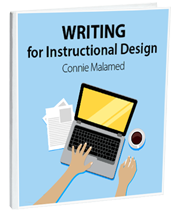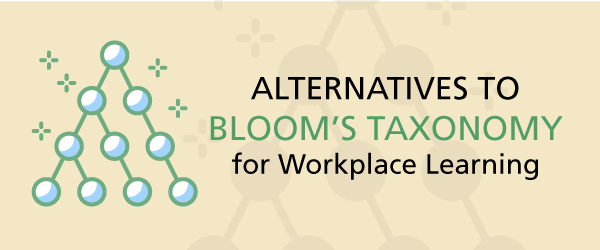How Bloom’s Taxonomy Came About
Discussions at the 1948 Convention of the American Psychological Association resulted in Benjamin Bloom leading a group of educators in an effort to classify educational goals and objectives. The goal was to come up with thinking behaviors that were important to the process of learning (Forehand, 2011).
Fast forward eight years and in 1956, the group produced a book explaining their new classification system of the cognitive domain—a hierarchy with six levels—known as Bloom’s Taxonomy. The original group always thought of the taxonomy as a work in progress (Anderson & Krathwohl, 2001).
Many readers have also seen the Anderson & Krathwohl revised version from 2001. The key change in this version is, “in the more useful and comprehensive additions of how the taxonomy intersects and acts upon different types and levels of knowledge — factual, conceptual, procedural and metacognitive” (Wilson, 2016). Wilson compares the two approaches in great detail here: Bloom’s Taxonomy Revised.
The Key Criticisms
Many learning professionals continue to use and benefit from Bloom’s Taxonomy as well as the newer revised version. Bloom thought the taxonomy created a “common language about learning goals to facilitate communication across persons, subject matter, and grade levels” (Krathwohl, 2002). However, it is valuable to know there are other taxonomies that might better fit your work and philosophy. Also, it’s helpful to be aware of the criticisms of the original and revised taxonomies. Here are three key criticisms:
- Criticism #1: Not Research-based. The revised taxonomy consists of six cognitive processes (remember, understand, apply, analyze, evaluate, and create) are arranged in a hierarchical order. There is no research to support the hierarchy exists or that learning happens in this type of succession.
- Criticism #2: Discrete Categories. Many kinds of learning happen at one time. Due to the hierarchical nature of the model, practitioners often assume each category is discrete. Nearly all complex learning activities require the use of several integrated cognitive skills.
- Criticism #3: Not Current. New kinds of learning are required in today’s world that do not easily fall into the Bloom’s or the revised cognitive taxonomy. According to Fink (2013), examples include “learning how to learn, leadership and interpersonal skills, ethics, communication skills, character, tolerance, and the ability to adapt to change.”
This article outlines several other frameworks you may want to explore.
Fink’s Taxonomy of Significant Learning
In his many years of work with faculty as an instructional consultant, Dee Fink realized that college teaching needed a way to be more meaningful to students. He defines significant learning as learning that makes a lasting change in a person’s life. His taxonomy reflects this: Foundational Knowledge, Application, Integration (connecting ideas, people, realms of life), Human Dimension (learning about oneself and others), Caring, Learning How to Learn. I think this taxonomy can easily apply to workplace training.
Read more about Fink’s Taxonomy in this article and in his book, Creating Significant Learning Experiences.
Brenda Sugrue’s Method
In 2013, Brenda Sugrue explained a method that simplified writing performance objectives by using the specific verb that describes the task as the verb for the performance objective. If a participant will be troubleshooting technical issues, then the verb is troubleshoot. No problem there.
Then tie the performance objective to its “supportive knowledge components (concepts, facts, processes, and principles that must be known or understood to perform the task).” This is divided into 1) the presentation of information and examples and 2) the practice and assessment required. She demonstrates this in two tables in the article A Learning Science Alternative to Bloom’s Taxonomy.
A Focus on Decision Making
In his article, Are Decisions the Key?, Clark Quinn states that demonstrating and practicing decision making may be sufficient for effective learning. From his perspective, in each type of knowledge classification: procedure, concept, fact, process and principle, the learner makes a decision to demonstrate it.
He notes that to classify a fact you decide is it this or that? To perform steps you decide which action to take. In this approach, the learner will need the requisite information, but, Clark writes, “focusing radically on decisions is the best way to work with SMEs, and is the best guide for designing practice (e.g., put learners in situations to make decisions).” Everything else revolves around that.
Relevance of Taxonomies in Training
Many of the cognitive classification systems were created for an education system rather than workplace training. Although they may be more relevant in the educational environment, there is often an educational component to workplace training. For example, people who make critical decisions or problem solve or must understand new research often require educational updates. You will have to decide for yourself whether taxonomies have a place in learning and development. Consider trying a new approach and see what happens.
As to the related topic of performance objectives, I invite you to read this three-part series on writing performance-based objectives.
- Anderson, L.W. (Ed.), Krathwohl, D.R. (Ed.), Airasian, P.W., Cruikshank, K.A., Mayer, R.E., Pintrich, P.R., Raths, J., & Wittrock, M.C. (2001). A taxonomy for learning, teaching, and assessing: A revision of Bloom’s Taxonomy of Educational Objectives (Complete edition). New York: Longman.
- Fink, L.D. (2013). Creating Significant Learning Experiences: An Integrated Approach to Creating College Courses, Jossey-Bass; 2nd edition.
- Forehand, M. (2005). Bloom’s Taxonomy: Original and Revised from https://cft.vanderbilt.edu/wp-content/uploads/sites/59/BloomsTaxonomy-mary-forehand.pdf.
- Krathwohl, D. (2002). Revising Bloom’s Taxonomy. Theory into Practice.
- Soozandehfar, S. & Adeli, M. (2016). A Critical Appraisal of Bloom’s Taxonomy. American Research Journal of English and Literature. Volume 2.
- Wilson, L.O. (2019). Anderson and Krathwohl – Bloom’s Taxonomy Revised, The Second Principle, from https://thesecondprinciple.com/wp-content/uploads/2019/10/blooms-taxonomy-revised.pdf



Hi Simonne,
You had to copy and paste that one. Here you go: https://thesecondprinciple.com/wp-content/uploads/2019/10/blooms-taxonomy-revised.pdf and I added the link in the article too.
Best,
Connie
Sounds interesting. Good for you for figuring out something that worked in your context.
Connie
Got a link? Don’t know it.
Hi Connie – what about SOLO taxonomy?
I utilised the revised Bloom’s taxonomy when they the company I’m working for asked me to create a certification exam for a couple of products I was teaching.
They were used to write the exam in one go, and that was written by a single SME.
So I introduced the idea of ”certification council”, a framework to write questions, etc.
I found the taxonomy extremely useful to define the level of knowledge we were expecting from the candidates to pass the exam, even if sometimes I found difficult to differentiate between levels.
It is good to know that there are more modern tools to explore.
Very interesting article thank you. However, the link to the Wilson article doesn’t seem to be working. Could you repost please?
Thank you! Do you know if he has any papers/books translated into English?
Louis D’Hainaut developed a concise taxonomy where cognitive operations are differentiated by the relationship between the input and the output of the operation. I found it very useful.
Agree, Jason. You don’t need to jettison if it works for you. Just know you have other options.
Bloom’s taxonomy still seems to apply to the other approaches.
For example, you could create a course on learning how to learn by using Bloom’s. Knowledge of what it means to learn, understanding principles of learning and applying those to the specific tasks people will see in the workplace or their school. Analyzing their personal methods of studying and practicing new skills, evaluating their performance, and ultimately creating ways to learn better.
Similar with affective issues like caring for others. Even making decisions could be understood within Bloom’s.
Of course, how we word the goals and objectives can be tweaked, but it could still be within a Bloom “framework.”
I am not saying Bloom and the others are perfect, but I don’t see a reason to jettison the taxonomy. Yet. ?
Several years ago we developed a SmartSkills model for describing the real world thinking processes expected of K-12 students in standards-based lessons and aligned assessments. The model can apply to the workplace, also. It offers a much quicker way than conventional taxonomies to determine if your learning experiences are helping today’s learners to acquire data, visualize information, and create new knowledge. See the model and examples here:
https://www.learningfront.com/Media/SmartSkills.pdf
SmartSkills is part of our TaskBuilder tool that has helped low performing schools to achieve rigorous high stakes state and local assessments.
https://www.learningfront.com/Media/TaskBuilder_2019.pdf
I think it’s still been helpful to a lot of people. I also got the impression he thought it would evolve.
An interesting overview. That Bloom didn’t have solid research to support it was ‘news to me.’
However, the basic breaking down of steps to acquire and use information was useful.